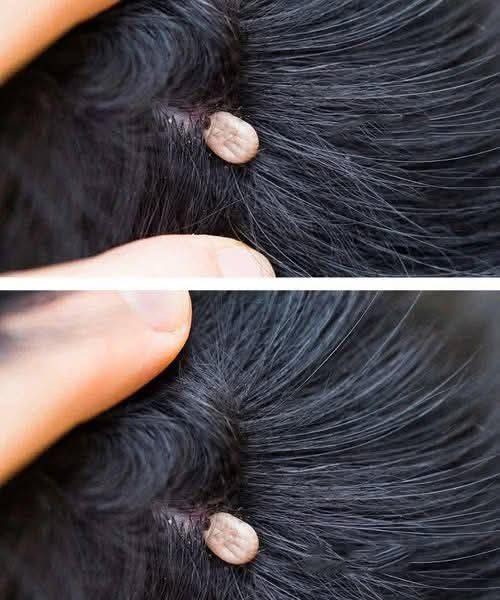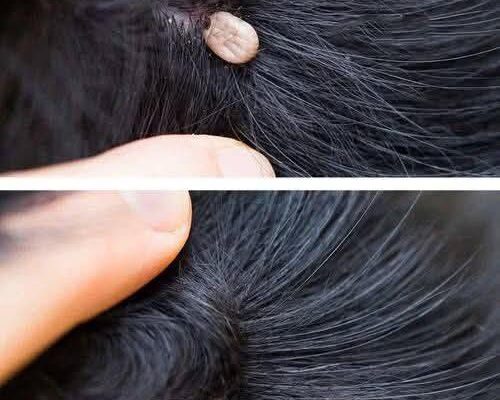It started with a simple bedtime routine — brushing your son’s hair — when you spot something strange. A tiny speck. A speck that moves. Or maybe it’s a cluster of tiny white dots glued to the hair shaft near his scalp.

You’re not alone. Thousands of parents have been in this exact moment — staring at something in their child’s hair and wondering:
👉 Is it dirt?
👉 Dandruff?
👉 Lice?
👉 Mites?
👉 Should I panic?
👉 Should I call the doctor?
Most hair-related issues in children are treatable and not dangerous — but early identification and action are key.
The first step is observation. Take your child to a well-lit area and use a magnifying glass if needed. Ask yourself:
- Is it moving? → Likely a live louse
- Is it tiny, white, and firmly attached to the hair shaft? → Could be nits (lice eggs)
- Is it flaky or scaly? → Might be dandruff or seborrheic dermatitis
- Is there redness, sores, or intense itching? → Could indicate infestation or infection
📌 Note: Nits are often mistaken for dandruff — but unlike dandruff, nits stick tightly to the hair and don’t brush off easily.
2. The Usual Suspects: Common Hair Pests in Kids
Children are especially vulnerable due to close contact at school, sleepovers, and playgrounds.
- Size: 2–3 mm, about the size of a sesame seed
- Color: Tan to grayish-white
- Behavior: Crawls (doesn’t jump or fly)
- Eggs (nits): Tiny, oval, white or yellowish, glued within ¼ inch of the scalp
- Symptoms: Itching, especially behind the ears and at the nape of the neck
✅ Good news: Lice don’t carry disease and aren’t a sign of poor hygiene.
Scabies Mites (Sarcoptes scabiei)
- Size: Microscopic — you won’t see them without a microscope
- Behavior: Burrow into the skin, not just the hair
- Symptoms: Intense itching (worse at night), pimple-like rash, tiny burrow lines on skin
- Common areas: Hands, wrists, elbows, armpits — but can spread to scalp, especially in young children or infants
⚠️ Red flag: If your child has a rash on the body and scalp irritation, scabies could be the cause.
3. How to Check for Lice and Nits
- Use a fine-toothed nit comb (available at pharmacies).
- Section the hair and comb from root to tip over a white towel or paper.
- Look for:
- Live lice crawling
- Nits that don’t brush off
- Check near the scalp, behind the ears, and at the back of the neck — lice love warmth.
🔍 Pro tip: Wet the hair and apply conditioner — it slows lice down and makes them easier to spot.
4. Home Remedies: What Works (and What’s Just a Hack)
Many parents turn to viral “natural” solutions — but not all are effective.
✅ What Can Help:
- Over-the-counter lice shampoos with permethrin or pyrethrin (e.g., Nix, Rid)
- Wet combing every 2–3 days for 2 weeks
- Sealing combs, brushes, and hair accessories in a plastic bag for 48 hours
- Washing bedding, hats, and stuffed animals in hot water (130°F+) and drying on high heat
- Mayonnaise or olive oil – May suffocate lice temporarily, but doesn’t kill nits
- Tea tree oil – Some antiseptic properties, but can irritate skin and isn’t a cure
- Hair dryers or flat irons – Not safe or effective; can burn the scalp
🛑 Never use kerosene, gasoline, or essential oils in high concentrations — they’re dangerous.
5. When to See a Doctor
While lice are usually manageable at home, certain signs mean it’s time to call your pediatrician or dermatologist:
✅ You’re unsure if it’s lice, mites, or a skin condition
✅ Your child has open sores, pus, or signs of infection (from scratching)
✅ Itching persists after treatment
✅ Rash spreads to the body (possible scabies)
✅ Infestation keeps coming back (could be resistant lice)
A doctor can:
- Confirm the diagnosis
- Prescribe stronger treatments (e.g., ivermectin, malathion)
- Rule out other conditions like ringworm or eczema
6. Preventing Re-Infestation
Even after treatment, lice can return. Protect your family with these steps:
- Avoid head-to-head contact (common during selfies, hugs, or play)
- Don’t share combs, hats, headphones, or hair ties
- Regularly check siblings — lice spread fast
- Vacuum furniture, car seats, and rugs (lice can survive 1–2 days off the scalp)
7. Final Thoughts: Stay Calm, Act Fast
Finding something in your child’s hair is scary — but it’s not an emergency in most cases.
- Lice are common — over 12 million cases occur annually in the U.S. alone.
- They’re not dangerous — just annoying and contagious.
- They’re treatable — with the right tools and patience.
You don’t need to rush to the ER.
But if you’re uncertain, or if symptoms worsen, a quick visit to the doctor can bring peace of mind — and faster relief. Because the best thing you can give your child right now isn’t panic — It’s clarity, care, and a good nit comb.
